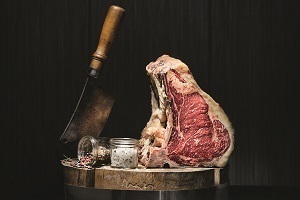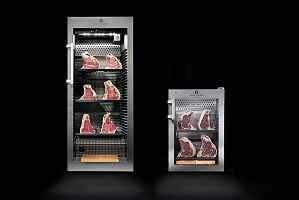
Dry Aged Beef is in great demand. The trend is not only in demand among steak connoisseurs. Even in the supermarket the noble meat is offered. But what does “Dry Aged” actually mean?

during dry aging, escaping liquid can evaporate. The meat matures dry. With wet aging, the meat is matured in a vacuum bag ready for consumption. The liquid cannot escape, the meat matures in its own juice. Both techniques have their advantages and disadvantages. However, the aroma is scored (almost always) by the Dry Aged Beef.
Beef is particularly most suitable for Dry Ageing. It has the longest aging time and is more resistant to germs than poultry. The meat is left on the bone in a cool climate during dry aging and is thus made ready for consumption. A dry layer is formed, which protects the meat and promotes the aromas at the same time. Beef is hung at least 2 up to 8 weeks.
Professional craftsmanship and technology are needed to ensure the maturing process works. Even the smallest temperature fluctuations can spoil the dry aged meat. Then undesirable mould cultures form, which make the meat inedible to dangerous. That is why a room is needed, whose climate can be exactly controlled.
Not every butcher’s or gastro business and certainly every private household has room for its own aging chamber. The DRY AGER® models DX 1000 and DX 500 have been specially designed for smaller kitchens and business and are easily to put into operation.


CUISINE CRAFT CO.,LTD
188/6 Supalai Premiere Ratchthewi Building, Petchburi Road, Thanon Petchburi, Ratchthewi, Bangkok 10400